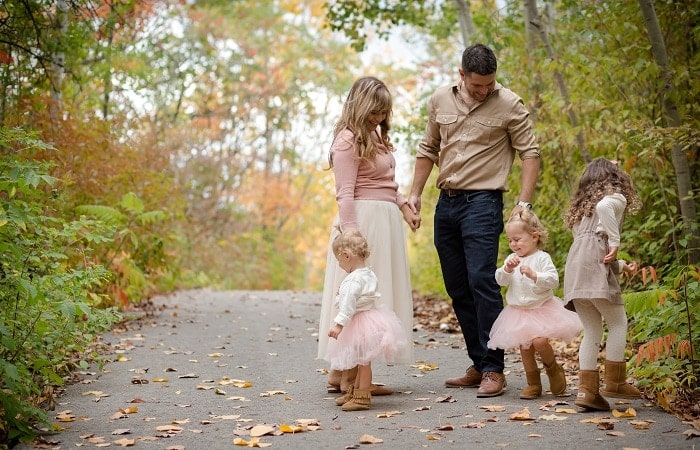Last updated on July 30th, 2024 at 02:32 pm
Are you struggling with your impulsive twins? Learn why your twins’ impulsive nature isn’t your fault and how you can help manage their behavior.
“Why can’t my kid stop doing that thing I told them not to do?!”
Sound familiar?
“I must have told them a thousand times already- and yet, they keep just doing it!”
Right?

Why Are They So Impulsive?
Sometimes as parents, it is our expectations of our children’s behaviour (or our society’s expectations of our children’s behaviour) that is actually more problematic than the behaviour itself.
Sometimes our expectations of how our children “should” behave are not in alignment with their brain development. If we expect them to behave in a way that is not within their developmental capacity, we are setting them (and ourselves) up for failure.
If we take it personally when our kids can’t “behave”, we feel like we are failing. As though we must not be “teaching” them properly. However, if we see their behavior as a reflection of their immaturity (rather than our parenting), then we can find patience, compassion, and empathy. We can be their leader and set them up for success, control the environment, and do our best to avoid situations where we feel that their impulse control is not yet mature enough for the situation we are placing them in (to the best of our ability of course).
Need some twin parent friends? Get the support you need with a Twiniversity Membership. Benefits include a monthly twin parent club meeting on Zoom, access to a private Facebook group just for twin parents, and a video library of twin parenting lessons. Visit Twiniversity.com/membership to join today!
Understanding the Science Behind Impulsive Twins
Bear with me for while I briefly geek out with some brain science to support your perspective, patience, and peace.
Dr. Dan Siegel and Tiny Payne Bryson use a beautiful analogy in their book, The Whole Brain Child, that will help me speak to this. They want you to imagine your brain is a house, with a downstairs and an upstairs. Your “downstairs brain” is more “primitive” and responsible for basic functions like breathing, blinking, innate reactions and *impulses*, and strong emotions (like anger and fear). The downstairs brain is really in charge of the mechanisms we need to survive and happen below that conscious awareness of the “upstairs brain”, at a more instinctual level.
Say, you see something coming at you in the corner of your eye? You have probably flinched or braced yourself out of instinct and impulse (if your downstairs brain is doing its job!) before your upstairs brain has even had time to cognitively determine what the “threat” is. A ball? Your dog? Just your toddler coming in for a hug and not actually a threat at all?

How Do These Two Brains Work Together?
Certain types of sensory input (in this example, quick movement in your peripheral vision) and emotions (emotion means “to move”) move us to respond fast- for our survival’s sake. Your upstairs brain takes longer to work, so your downstairs brain responds automatically for you! It is designed to keep you safe.
Your upstairs brain is different. It is our “thinking” brain, and controls our higher-order analytical thinking.
Dr. Siegel and Dr. Payne Bryson help us imagine a metaphorical staircase between the two parts of the brain that allow them to integrate. So that our thinking brain can temper the strong reactions, impulses, and emotions that originate from a more primitive brain.
While we are born with a well-developed downstairs brain- the upstairs brain doesn’t reach full maturity until a person reaches their mid-twenties. It’s actually one of the last parts of the brain to develop.
We can picture standing in the downstairs brains’ of your impulsive twins, looking up the staircase where the upstairs should be, and see big patches of sky through the unfinished roof. Their brains are really still “under construction”.
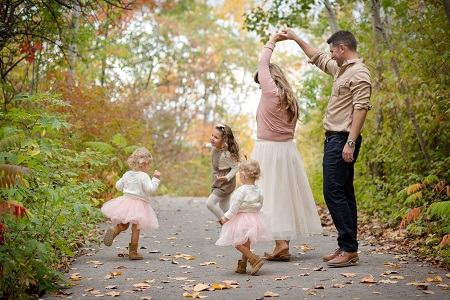
Change Your Mindset
Here is where the perspective shift and empathy come from: the behaviors we want most for our children, like making “good choices”, controlling their emotions and bodies, empathy, self-understanding, and morality- are dependent on a part of their brain that isn’t fully developed yet.
Not because you are a bad parent, not because you have bad kids, but because developmentally they are working with equipment that is still under construction!
Sometimes their upstairs brain will quite literally be unable to stop the behavior the downstairs brain has put into motion.
We can tell ourselves “my kids are working with immature hardware and they need my gentle guidance and understanding to help them grow into the functions they are acquiring”.
Point out Alternatives to the Behavior
I’m not saying hitting their brother or eating the cookie you told them not to eat is “okay”, but we can certainly acknowledge and relate to the emotions and impulses that drove them to those behaviors.
“Ugh, it is so frustrating when your brother takes your toys! I bet that made you so mad! I can’t let you hit, I’m going to hold your hands until your body doesn’t feel like hitting any more”.
Or
“I saw you take that cookie, and that is not what we are eating. You really love cookies, and I bet it was so hard to try not to eat them. But you will not do that again”
I love Dr. Vanessa Lapointe’s approach and language to cope with your child’s impulsive transgressions, we need to be equal parts firm and kind. But she also points out that we must not delude ourselves to think that when something happens, and we use the “right words”, and we find that place in ourselves that is just perfectly firm and kind- that this means they will NEVER “mess up” or give in to their impulses again. Of course, they will do these things again- remember the holes in the roof of their upstairs brain (until they are almost 25!!)? We come alongside with equal parts firm and kind, as many times as it takes.

Control Inner Influences to Manage Impulses
Go to connection over disconnection in order for the child to patch those holes in their roof- growth and learning happen within the context of the relationship.
Fatigue, hunger, sickness, stress, big life changes- all impact our ability to regulate ourselves and therefore our chance of being able to manage our impulses. Make sure your impulsive twins are getting adequate sleep and fed timely meals. Give extra compassion during stressful or big life changes.
Help your child learn that all emotions are okay but not all behaviors. Our emotions and impulses come from our “downstairs” brain and do not come from a place of conscious control. When we feel sad, mad, angry, etc- we don’t choose to feel these ways. Our brain chooses for us then our upstairs brain can temper how we deal with these emotions.
Emotional regulation is a VERY tricky skill. We don’t want our kids to think they are inherently “bad” for the emotions and impulses that come over them. So we always start with acknowledging where the emotion is coming from “it is SO frustrating when your brother takes your toy” then we can communicate the acceptable behaviors that we tolerate or don’t tolerate with that feeling, “and I will not let you hit him”. Sometimes providing an alternative can be helpful “but you can punch this pillow”.
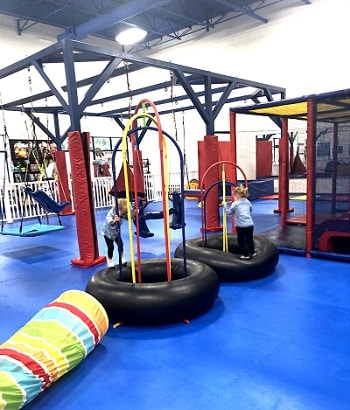
Acknowledge How Outside Influences Might Affect Impulses
Talk aloud about your own impulse control. “This traffic is making me feel so frustrated, I really want to honk my horn and scream! Instead I’m going to take a deep breath and count to 10”. Kids often do what we do, not what we tell them.
Made a mistake and your impulses got the best of you? Even better, we are all human and it is important to show how to make amends. “Mommy is feeling really tired because she didn’t sleep well, and I’m a little bit hungry. That makes it harder for me to stay calm and keep my cool. It is not okay to shout. I am sorry I shouted. Next time I will take a deep breath and calm my body before I ask you to come to the dinner table.”
Control the environment to the best of your ability. Don’t leave your child in charge of holding a boundary or maintaining a behavior if their upstairs brain isn’t ready for it. Don’t leave out tempting treats that your 6-year-old is not supposed to eat. Try not to leave your 4-year-olds alone to play for too long if you know they will likely end up hitting each other. Providing age (and brain development!) appropriate expectations and situations go a long way to helping everyone feel more successful.
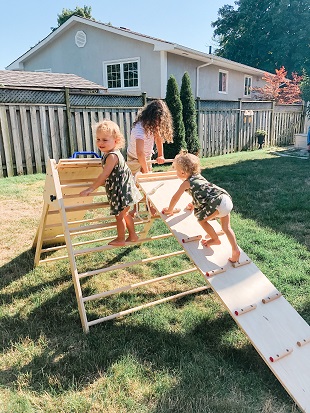
Use Movement to Reduce Impulsivity
Research has shown that bodily movement directly affects brain chemistry. Input to our muscles and joints through heavy work (moving against resistance), running, jumping, climbing, pushing, and pulling all stimulate the body systems that have an impact on serotonin levels in the brain. We can use this information to our advantage in two ways. The first is proactive: by building in ample opportunity to move in our child’s day, they will likely be more regulated and able to draw on the skills their upstairs brain is capable of. Integration of the upstairs and downstairs brain is more possible when we feel regulated.
We can also use a movement strategy reactively- to help a child who has lost touch with their upstairs brain. Dr. Siegel tells us that when we change our physical state, we change our emotional state. So when one of your children has lost touch with his upstairs brain (i.e. stuck in a meltdown, feeling very impulsive, etc), a powerful way to help him regain balance is to have him move his body. Go for a bike ride, do some jumping jacks, walk like a crab, be playful and find a way to (literally) move your child out of their downstairs brain and onto that second floor!
Have Patience With Impulsive Twins
A quick google or Pinterest search for age-appropriate heavy work activities for regulation will draw you up a gold mine of ideas.
You’ve got this, it is hard work to be mindful of our own regulation and expectations. It is our job to hold boundaries and help them control their impulses when they are not able. Dr. Lapointe says this beautifully, “Children are not tiny adults. Children are children.”
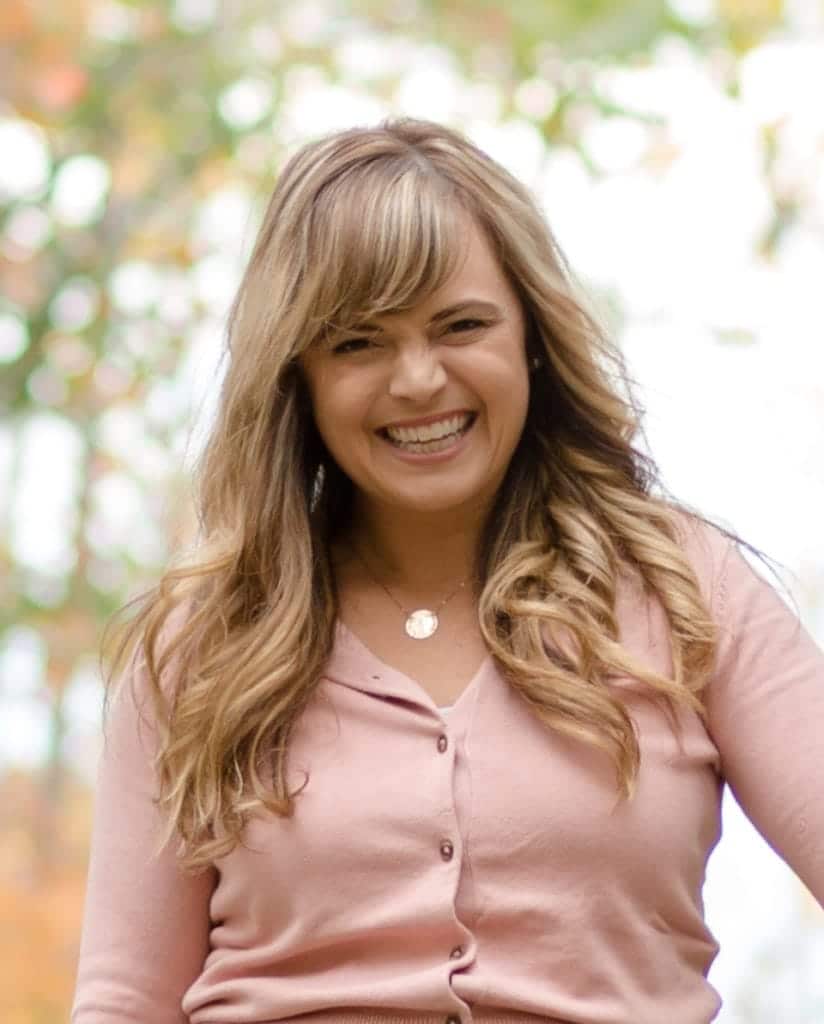
Jennifer Russell is Mom to a small girl gang of three, including her twin toddlers. She is a pediatric occupational therapist on a mission to empower caregiver confidence and connection in everyday life and daily routines. Her mono-di twin pregnancy turned high risk, and her girls are Twin to Twin Transfusion Survivors. Baby B also had severe selective intrauterine growth restriction (Baby A did not like sharing that placenta, and still does not like sharing toys or food to this day!). The pregnancy ended with a preemie and NICU journey causing Jen to cross the line from health care provider to health care receiver. She knows first hand that supporting your child’s development can feel beyond daunting and overwhelming. Jen is a firm believer that you can support your children’s development in your everyday activities and through play. You can find her on Instagram @otmomdiaries or check out her website www.moveplaylovegrow.com- You’ve got this!
References
- Siegel, D. & Payne Bryson, T. 2012, The Whole Brain Child, Bantam Books Trade, New York.
- Lapointe, V & Rae, K. (2020). Raising an Emotionally Intelligent Child [Podcast]. Available at https://www.youtube.com/watch?v=KlJ_Qp8DmGI (accessed November 30, 2020).

